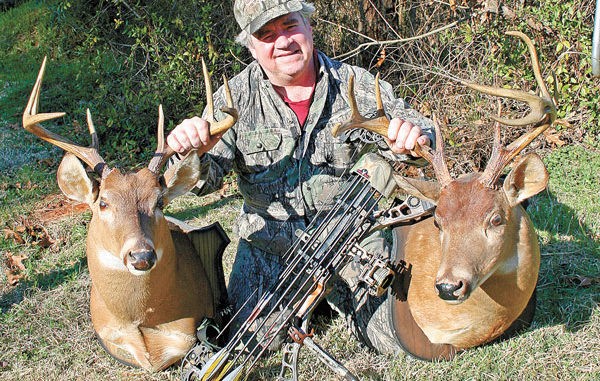
Don’t give up when the rut ends; late-season bucks are tough to kill, but not impossible.
There are a couple of good things about the tag end of deer season in South Carolina. First, the number of deer hunters drops off as small-game seasons open, and some hunters have just had their fill of whitetails. Others simply don’t like to sit still for long periods in the December cold.
Second, there are still plenty of good bucks around. Data from the S.C. Department of Natural Resources’ harvest surveys and trophy scoring indicates a number of trophy bucks are taken at this time of the year.
Bill Geddings, who lives a few miles from Kingstree in Williamsburg County, has long been a proponent of late-season deer hunting in the coastal plain. In fact, it is one of his favorite times to hunt for the above two reasons.
“Late-season deer hunting is an under-utilized opportunity for a lot of South Carolina hunters,” Geddings said. “While the rut is a great time to take a big buck, if you plan your strategy right, the late season can be just as good. You may not see as many deer overall, but the chances of getting the crosshairs on a quality buck are very good.”
One of the key elements to success, according to Geddings, is changing your hunting tactics.
“After the rut ends, deer patterns — especially big-buck patterns — change dramatically,” he said. “Deer are pressured hard throughout the early season and the rut, and there’s no doubt that some for the biggest bucks go nocturnal, or they’ll hide out in heavy cover most of the time.
“That’s why it’s important to get away from other hunters, get away from open areas and start thinking about great places for deer to hide. Thick-growth funnels between open areas, grown-up cutovers, swamps and just heavy, dense cover of any type can be places to look.
“There’s still plenty of deer hunters, and of course, the small-game hunters now in the woods,” he said, “but the trick is to use these hunters to your advantage, not to your detriment.
“A lot of hunters can be patterned, just like deer will have distinct patterns. Most deer hunters will continue to hunt where they were successful in the early season and during the rut. Let them continue to hunt those areas, and I’ll move to the thickets and swamps where the deer will be most heavily concentrated. That doesn’t mean it’s easy, but you’ve got to be where the deer are in order to be successful.
“I’ve hunted all my life, and I think that’s a situation you will find throughout the state of South Carolina. Deer will change their patterns dramatically during December.”
Bill Cline of Ridgeway is another late-season deer expert who primarily hunts the piedmont portion of the state, with a strong emphasis on bowhunting. Cline said he agrees that the strategy for late season must change in order to be successful.
“Regardless of whether you are bow-hunting or gun-hunting, a good hunter always stays on top of changing patterns,” Cline said. “Sometimes food patterns change, and that will dictate where deer are located in the late season. This is specifically the available food sources that can be quite localized in the state, so expect it vary according to where you hunt and even the type of woods you hunt.
“Find the food source for your area and hunt that food source when it’s right. A good example is persimmon trees. There’s a period during the year when that is a prime place for me to hunt, but by late season, the persimmons are long gone — and so are the deer from those areas. Different varieties of mast trees in different areas of the state drop their acorns at different times of the season, which can be a key to success. But post-rut and late-season is often more about heavy, thick cover and getting away from other hunters, especially for big bucks.
“To be effective, you’ve got to scout an area,” he said. ‘My scouting strategy is the same I use all season, I get in, find out what I need to know and get out. My ingress and egress is from the opposite area where I think the deer are concentrated. Specifically, I’ll look for well-used travel routes that have very fresh sign.
“One reason I am so carful is that it is much easier to take a buck that is not pressured than one that is,” Cline said. “I do not want that animal to feel pressure from me. Late in the season, I will literally go the extra mile to avoid leaving a trace of being in his woods.”
Wooded draws that narrow between open areas are one kind of places that Cline prefers to hunt in late season.
“Deer will move in late season, but they are very particular about where and how they move,” he said. “Forget the rut patterns; deer are back to their stealth mode. In areas that are not heavily pressured, these travel routes will sometimes be found in draws where the woods narrow into a funnel, (and) where I have an opportunity to see far enough to get a shot with a bow. If gun-hunting, you can often cover an entire funnel area.
“I sometimes set up along logging roads or small woods roads and catch bucks crossing the openings. Bucks that are pressured will tend to stick in the deeper thickets. You can still get them, but it is much more difficult.”
One trick Cline loves to employ, especially in the Piedmont and Upstate, is to use creeks bottoms to help him slip in and out of an area.
“Often, that puts me a bit lower in elevation and more out of sight, plus, it masks my noise and scent by slipping along in the water,” he said. “I try to keep it quiet, but making a slight splash is usually not a detriment in terms of spooking deer; there’s some background noise with the water moving in a stream anyway. In a stagnate swamp with no water flow, I’m more careful to be very quiet. I’ve been slipping in this way and had deer walk right upon me, but staying out of sight and hiding the scent are the prime reasons I use this tactic when I can.”
Geddings considers other opportunities late in the season as well. One of his favored is food plots, which will attract both bucks and does.
“Planting food plots is always a good idea, especially if you plant crops that will be ready for the late season,” he said. “To my way of thinking, this is a prime time of the season to hunt food plots. By December, food for deer can begin to get scarce. If you’re hunting areas with fall-planted crops such as wheat and rye, then look for these areas to begin to produce excellent results during the post-rut time frame. This is one of the best places to see deer now and really throughout the winter.
“If you’re looking for meat in the freezer, odds are very good for seeing hefty doe deer early and late in the day. But also, bucks are often tempted to feed before dark. If you can avoid getting trigger-happy, let the does come out and feed, and often, just at last light, that big antlered buck may step out for a patient hunter.”
Geddings said clear-cuts that have been replanted in pines and are three to six years old are another kind of spot that begins to produce late in the season.
“These thick, gnarly areas are places deer love to frequent during this time of the year,” he said. “The vegetation is usually as high as or higher than their heads, which makes them feel safe. On those cold December mornings, you can expect to see deer move into the areas where the sun splashes down — the sloped areas or fields with a southern exposure are the prime ones.”
Another key to Geddings’ success is staying until it is absolutely dark when hunting in the afternoon. The later it gets within legal shooting time, the higher the odds of seeing deer.
“There’s a time when it gets too dark to make out your target and you can’t safely shoot,” he said. “However, you can still use that time to your advantage. If you see a big-bodied deer, but it’s too late to shoot, watch him and let him get out of the area before you get out of the stand. Then, you can be back there the next morning to perhaps see him when there is ample light — or you move your stand location back toward the direction he approached, giving you the opportunity to see him when there’s enough light to shoot. Small things like this can lead to taking some huge bucks.”
Cline said success during the late season is no different than any other time of the year. Hunters need a specific plan for the specific place they hunt.
“For consistent success, most of us need a game plan,” Cline said. “I usually begin serious scouting for the upcoming season in the summer, but I keep scouting every time I’m hunting and change my plan accordingly. Knowing where the bucks are, where they are going, where they are coming from, when they’re likely to come by, why they are in that spot are success keys. There’s a reason for a buck’s movement, and knowing the answers are essential to successful deer hunting, whether hunting with a bow or gun or whether it’s early, rut or late-season.
“All the little things come together to help me see the big picture,” he said. “And getting that late-season buck is the picture I’m seeking at this time of the year.

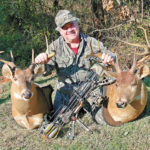
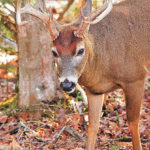
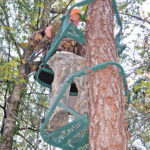
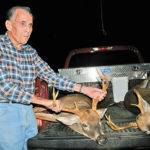
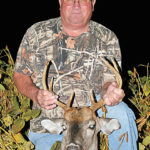



Be the first to comment